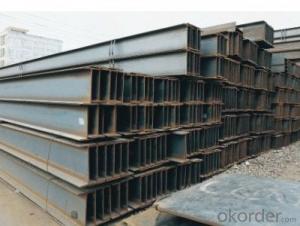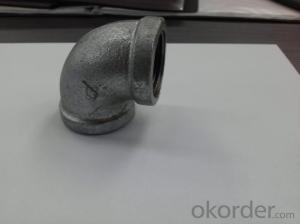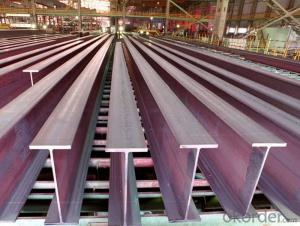Maanshan Steel Pipe Made in China with High Quality
- Loading Port:
- Tianjin
- Payment Terms:
- TT OR LC
- Min Order Qty:
- 100 PCS
- Supply Capability:
- 1000 PCS/month
OKorder Service Pledge
OKorder Financial Service
You Might Also Like
1.Packaging & Delivery
Packaging Detail: | Part Name:Malleable Cast Iron Pipe Fitting Brand Name:Fengyuan Malleable Cast Iron Pipe Fitting Model No.:Fyzz0030 QTY Of Each Carton: 65 Pieces (According To The Weight and Volume Of Many Kinds Of Products)Weight:28KG (Various Types May Get Different Weights) Size:68*48*30mm CBM:0.1Stere Per Carton H.S Code:8708949090 (Various Parts Get Different Codes) Parts Or Not:Spare Parts Container Information:40 Or 20 Inch Container (According To The Require Of Customer) Pallet Or Not:All Parts Pallet-Load According |
Delivery Detail: | For Samples:7-10Days;For Mass Production:10-20 Days |
2.Specifications
malleable cast iron pipe fitting
1.casting part
2.malleable cast iron pipe fitting
3.annual casting 550000MT
4.ISO9001:2008
3.Product information:
Brand Name | Malleable Cast Iron Pipe Fitting |
Material | Standard material according to technical drawing, like Stainless steel, Alloy steel, Carbon steel, Aluminum etc |
Material Standard | We could produce as your requirements |
Quality control | ISO9001:2008 control |
QC System | 100% inspection before shipment |
Applied Software for Specification drawings | JPEG, PDF, CAD, IGS Accepted |
Precision machining | CNC machining, milling machine, drilling machine, numerical lathe, all types of lathe |
Payment Terms | L/C,D/A,D/P,T/T,Western Union,MoneyGram.Various options to make payment more convenient |
Surface Treatment | polishing, sand blasting, heat treatment, painting, powder coating, anodizing,electroplating, mirror polishing |
Our services | CNC Machining, Turning, Milling, Stamping, Casting, finish,packing. |
Application | Valves, auto parts, motorcycle parts, metal products for daily use, plumbing pipe fittings |
Product's Design And Products Assembly | As per client's drawing or sample , besides we are also experienced in products assembly. |
Competitive advantage | 1. Small quantity order acceptable. 2. Very tight tolerance. 3. Advanced equipment, excellent R&D teams 4. Strict quality control system. 5. Professional technics and rich experience 6. Packaging details as client required |
Main Products | machining parts, stamping parts,casting parts |
R&D | We have professional engineers and technical workers who are specialized in developing new products . Professional tooling development & process & design,At least 60 kinds of new parts are developed according to customer's drawings each year. |
Customized Service | Able to produce according to specification with technical drawing .Also, we can design for you |
4.Malleable Cast Iron Pipe Fitting Equipment display:
Process Facilities | Quantity |
CNC Machine | 15sets |
Lathe Machine | 5 sets |
Instrument lathe | 28 sets |
Centerless Grinding Machine | 1 set |
Surface Grinding Machine | 2 sets |
Drilling Machine | 3 sets |
Milling Machine | 3 sets |
Drilling And Milling Machine | 2 sets |
Tapping Machine | 14 sets |
Punching Machine | 10 sets |
Four Column Hydraulic Press | 1 set |
Digital Electronic Ac Arc Welder | 2 sets |
Hanging Type Cleaning Machine | 1 set |
Horizontal cold chamber die casting machine | 2 sets |
Aluminum alloy die casting machine | 5 sets |
5.Malleable Cast Iron Pipe Fitting Testing Equipments:
equipment | Quantity |
Micrometer | 1 set |
Height gage | 1 set |
Two meters vernier caliper | 1 set |
General gage | 100 sets |
Two dimensional imaging instrument | 1 set |
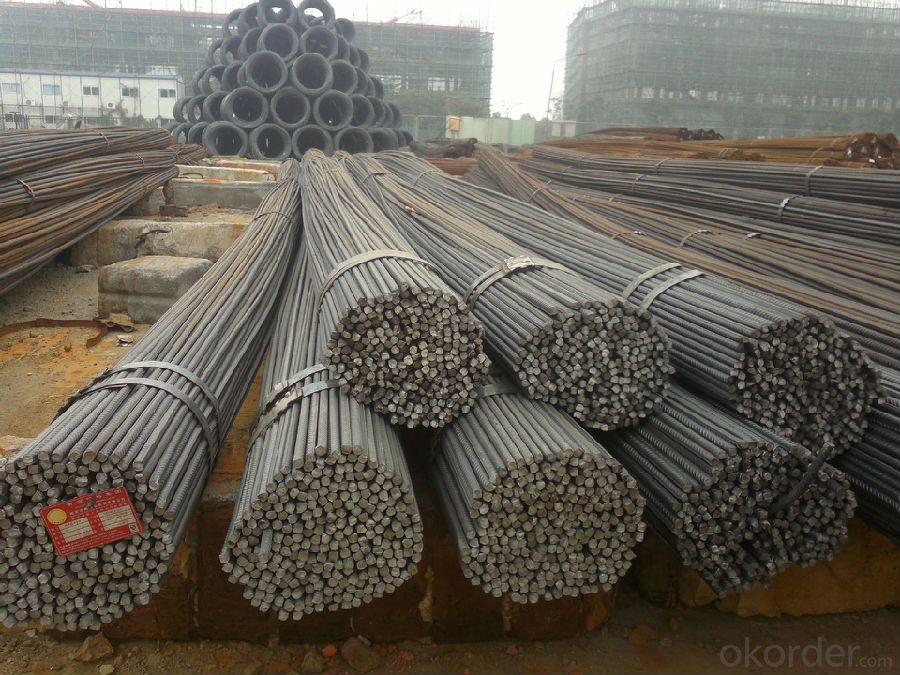
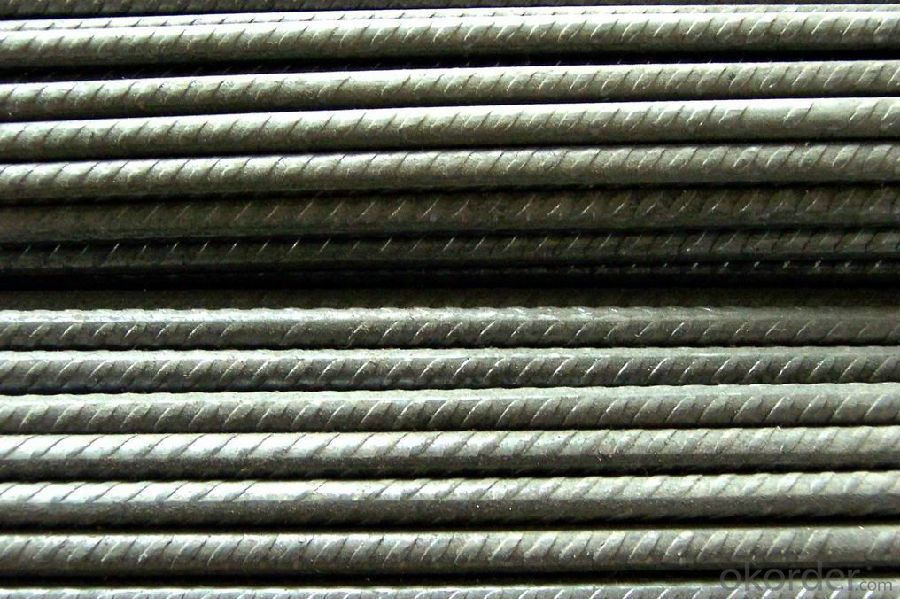
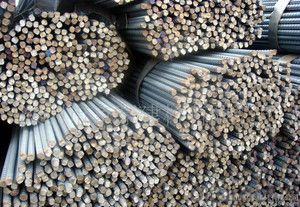
- Q:What are the factors affecting the pressure rating of steel pipes?
- The factors affecting the pressure rating of steel pipes include the thickness and strength of the pipe material, the diameter and length of the pipe, the temperature of the fluid being transported, the type of fluid, and the presence of any corrosive substances or external loads.
- Q:How are steel pipes used in the construction of natural gas power plants?
- Steel pipes are used in the construction of natural gas power plants for various purposes such as transporting natural gas from the source to the plant, distributing gas within the facility, and carrying exhaust gases away from the plant. They are essential for maintaining a safe and efficient flow of natural gas throughout the power plant's infrastructure.
- Q:How do you calculate the pipe volume for steel pipes?
- In order to determine the volume of a steel pipe, one must possess knowledge regarding its length and the inner diameter. The formula for calculating the volume of a cylindrical shape, such as a pipe, is V = πr^2h, where V denotes the volume, π represents a mathematical constant which is approximately equivalent to 3.14159, r signifies the radius of the pipe (which is half of the inner diameter), and h stands for the length of the pipe. Initially, employ a measuring tape or a caliper to measure the inner diameter of the pipe. Proceed to divide this value by 2 in order to obtain the radius. Afterwards, proceed to measure the length of the pipe, utilizing inches, feet, or meters. Ensure that the same unit of measurement is used for both the radius and length. Once the measurements for the radius and length have been ascertained, input them into the formula V = πr^2h. For instance, let us assume that the inner diameter of the steel pipe measures 10 inches and the length amounts to 50 feet. Firstly, divide the inner diameter by 2 to determine the radius: 10 / 2 = 5 inches. Next, convert the length into inches: 50 feet * 12 inches/foot = 600 inches. Subsequently, input the values into the formula: V = 3.14159 * 5^2 * 600. By calculating the volume: V = 3.14159 * 25 * 600 = 47,123.85 cubic inches. Therefore, the volume of the steel pipe is approximately 47,123.85 cubic inches.
- Q:How are steel pipes used in the telecommunications network infrastructure?
- Steel pipes are widely used in the telecommunications network infrastructure for various purposes. One of the primary uses of steel pipes in this industry is for the installation of underground cable conduits. These conduits protect the telecommunications cables from external factors such as moisture, rodents, and physical damage. Steel pipes provide excellent strength and durability, ensuring the long-term protection of the cables. Additionally, steel pipes are used in the construction of telecom towers and antenna masts. These structures need to be sturdy and able to withstand harsh weather conditions. Steel pipes offer the necessary strength, stability, and resilience required for telecom towers to support antennas and other equipment. They can be easily assembled, allowing for efficient deployment and maintenance of the network infrastructure. Moreover, steel pipes are essential for the installation of fiber optic cables. Fiber optic cables transmit data at high speeds using light signals. To ensure optimal performance, these cables need to be protected from any external interference. Steel pipes serve as a conduit for fiber optic cables, shielding them from electromagnetic interference and other potential disruptions. In summary, steel pipes play a crucial role in the telecommunications network infrastructure. They are used for the installation of underground cable conduits, construction of telecom towers, and protection of fiber optic cables. The strength, durability, and versatility of steel pipes make them an ideal choice for ensuring the reliability and functionality of telecommunications systems.
- Q:Are steel pipes suitable for solar power plants?
- Indeed, solar power plants find steel pipes to be a fitting choice. Owing to their enduring nature, resilience, and ability to resist corrosion, steel pipes are commonly employed in the construction of solar power plants. They serve diverse purposes within these plants, encompassing the conveyance of fluids like water or heat transfer fluids, as well as proffering structural reinforcement for solar panels and other apparatus. Steel pipes excel at enduring high temperatures and pressure, thus rendering them an optimal choice for the efficient functioning of solar power plants. Moreover, steel pipes are readily obtainable and cost-effective, thereby establishing their popularity in the construction of solar power plants.
- Q:What is the fire rating of steel pipes?
- The fire rating of steel pipes can vary depending on factors such as the thickness of the pipe, the type of insulation or fireproofing materials used, and the specific application or building codes. However, steel pipes are generally considered to have good fire resistance properties due to their non-combustible nature and ability to withstand high temperatures.
- Q:What are the safety precautions to follow when working with steel pipes?
- When working with steel pipes, it is important to follow several safety precautions to ensure the well-being of yourself and those around you. These precautions include: 1. Personal Protective Equipment (PPE): Always wear the appropriate PPE when working with steel pipes. This includes safety glasses, gloves, steel-toed boots, and a hard hat. PPE helps protect you from potential hazards such as flying debris, falling objects, and sharp edges. 2. Proper Lifting Techniques: Steel pipes can be heavy and awkward to handle. Always use proper lifting techniques to avoid strain or injury. Bend your knees, keep your back straight, and use your legs to lift the pipes. If a pipe is too heavy to lift on your own, ask for assistance or use mechanical lifting equipment. 3. Secure Working Area: Ensure that the work area is clean, organized, and free from tripping hazards. Keep the floor clear of tools, debris, and other obstructions that may cause accidents. Additionally, barricade or cordon off the work area to prevent unauthorized access and ensure the safety of others. 4. Use Proper Tools and Equipment: Use the right tools and equipment for the job. This includes using wrenches, pipe cutters, and clamps designed specifically for steel pipes. Using improper tools can lead to accidents, damage to the pipes, or faulty connections. 5. Proper Storage: Store steel pipes in a secure and organized manner to prevent them from falling or rolling onto someone. Stack the pipes in a stable position, and use racks or supports to ensure they are not at risk of toppling over. 6. Secure Connections: When joining steel pipes, ensure that the connections are properly secured. This includes using appropriate fittings, tight fasteners, and following the recommended torque specifications. Loose or improperly secured connections can result in leaks, bursts, or other failures. 7. Proper Ventilation: If working in an enclosed space, ensure adequate ventilation to prevent the buildup of harmful gases or fumes. Welding or cutting steel pipes can release hazardous gases, so make sure the area is properly ventilated or use respiratory protection if necessary. 8. Fire Safety: Steel pipes can become extremely hot during welding or cutting processes. Have fire extinguishers readily available and know how to use them. Clear any flammable materials from the work area and be cautious of sparks or open flames. 9. Regular Inspections: Regularly inspect steel pipes for signs of damage, such as cracks, rust, or degradation. Replace any damaged or compromised pipes to avoid potential failures or accidents. By following these safety precautions, you can minimize the risks associated with working with steel pipes and ensure a safe working environment. Remember, safety should always be the top priority.
- Q:How do you connect steel pipes together?
- To connect steel pipes together, there are several methods commonly used in various industries. One commonly used method is welding. Welding involves heating the ends of the steel pipes and then joining them together using a welding rod or wire. This method creates a strong and durable connection that is capable of withstanding high pressures and temperatures. Another method is threading, where threads are cut into the ends of the steel pipes. These threaded ends can then be screwed together using pipe fittings such as couplings or unions. Threading is commonly used for smaller diameter pipes and is advantageous as it allows for easy disassembly and reassembly of the pipes. Flanges can also be used to connect steel pipes together. Flanges are flat, circular discs with holes in them that can be bolted together. They provide a strong and secure connection, especially for large diameter pipes or pipes that need to be easily disconnected for maintenance or repairs. Pipe fittings such as couplings, tees, elbows, or reducers can also be used to connect steel pipes together. These fittings are typically made of steel or other materials and are designed to be welded, threaded, or connected using other methods like grooving or compression. It's important to note that the method used to connect steel pipes together will depend on various factors such as the pipe size, the application, the required strength, and the specific industry standards or codes that need to be followed. Therefore, it's essential to consult with a qualified professional or refer to industry-specific guidelines when choosing the appropriate method for joining steel pipes.
- Q:Can steel pipes be used for underground stormwater systems?
- Yes, steel pipes can be used for underground stormwater systems. Steel pipes are durable and resistant to corrosion, making them a suitable choice for underground applications. Additionally, steel pipes can handle high volumes of stormwater, making them ideal for stormwater management systems.
- Q:How are steel pipes used in the water supply system?
- Steel pipes are commonly used in the water supply system due to their durability, strength, and corrosion resistance. They are used to transport water from water treatment plants to homes, buildings, and industries. Steel pipes are also used for underground water mains, as they can withstand high pressures and are less likely to leak or break. Additionally, steel pipes are often used in water storage tanks and pumping stations to ensure a reliable and efficient water supply.
1. Manufacturer Overview |
|
|---|---|
| Location | |
| Year Established | |
| Annual Output Value | |
| Main Markets | |
| Company Certifications | |
2. Manufacturer Certificates |
|
|---|---|
| a) Certification Name | |
| Range | |
| Reference | |
| Validity Period | |
3. Manufacturer Capability |
|
|---|---|
| a)Trade Capacity | |
| Nearest Port | |
| Export Percentage | |
| No.of Employees in Trade Department | |
| Language Spoken: | |
| b)Factory Information | |
| Factory Size: | |
| No. of Production Lines | |
| Contract Manufacturing | |
| Product Price Range | |
Send your message to us
Maanshan Steel Pipe Made in China with High Quality
- Loading Port:
- Tianjin
- Payment Terms:
- TT OR LC
- Min Order Qty:
- 100 PCS
- Supply Capability:
- 1000 PCS/month
OKorder Service Pledge
OKorder Financial Service
Similar products
New products
Hot products
Related keywords
